Finishing of bathrooms Mosaic: materials, ornamental and color solutions, features of laying. Manufacturers and price frameworks.
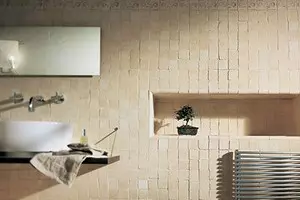
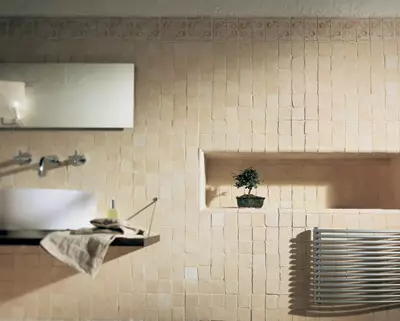
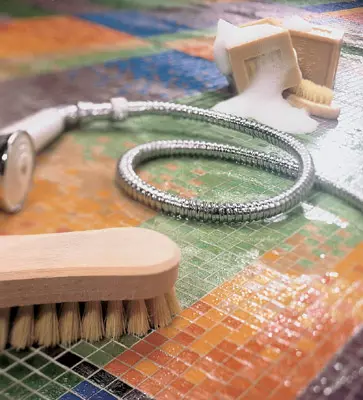
Glass mosaic does not absorb water, which allows it to use it in rooms with high humidity (Bisazza)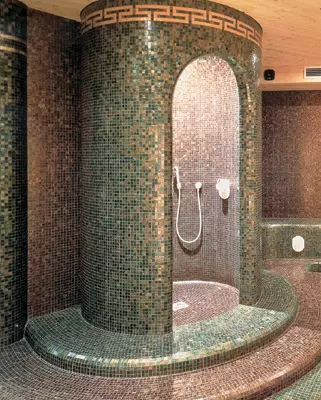
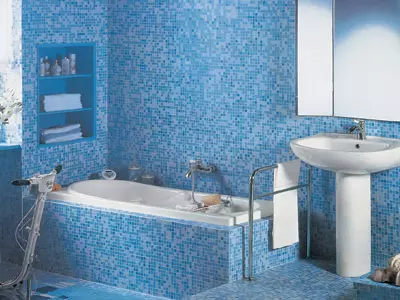
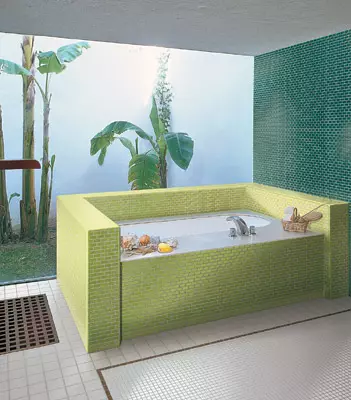
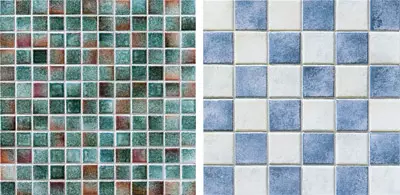
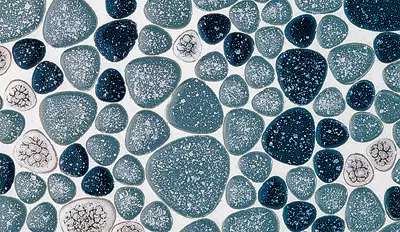
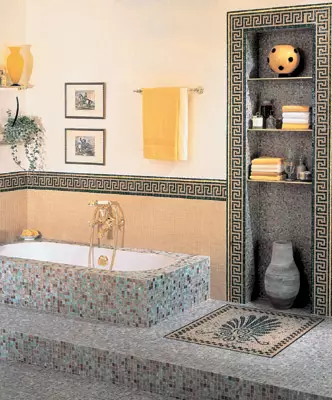
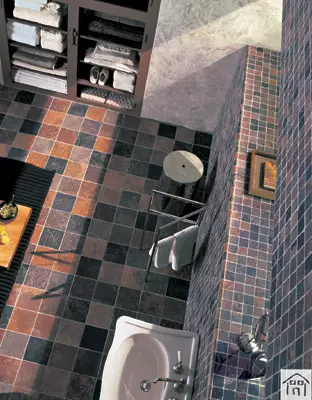
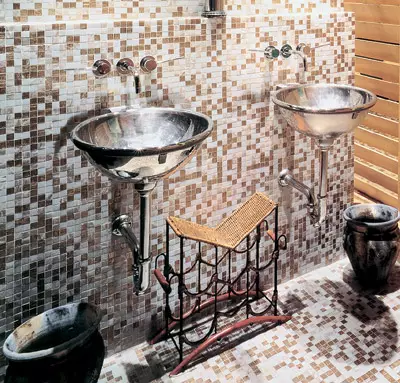
Pearl shine. This effect is achieved through the use as an additional adventure chips. (Bisazza)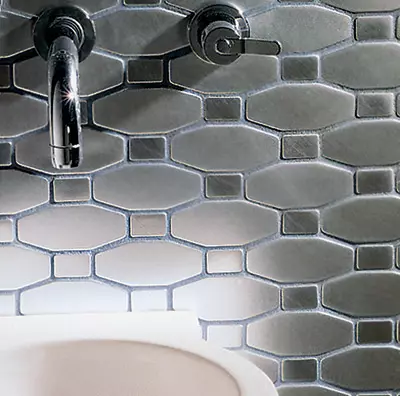
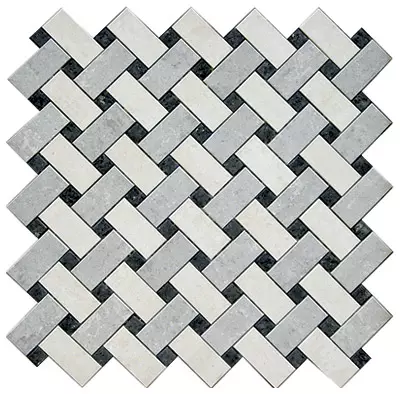
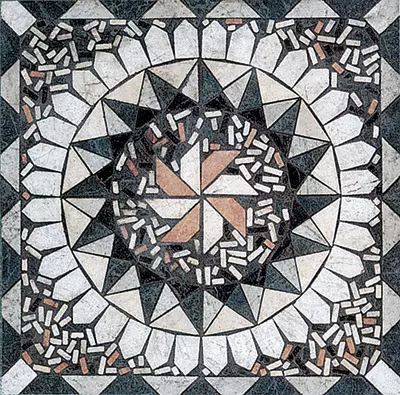
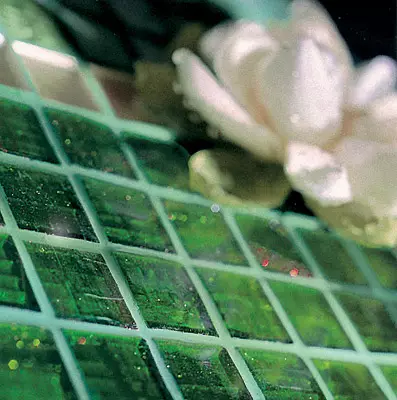
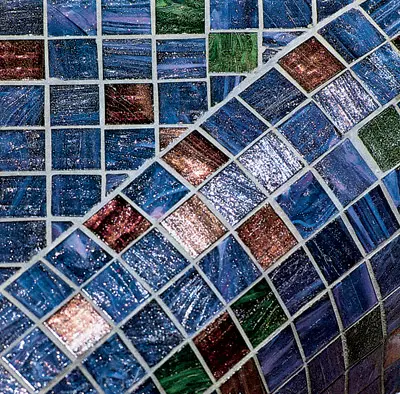
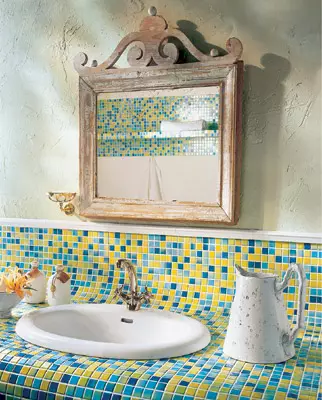
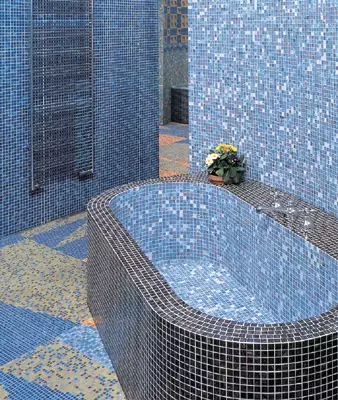
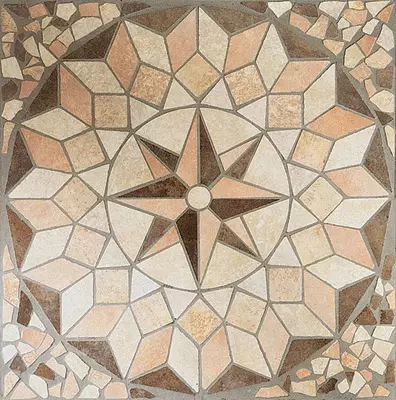
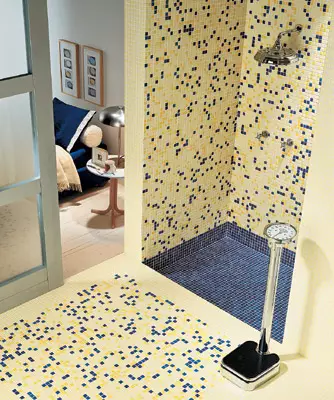
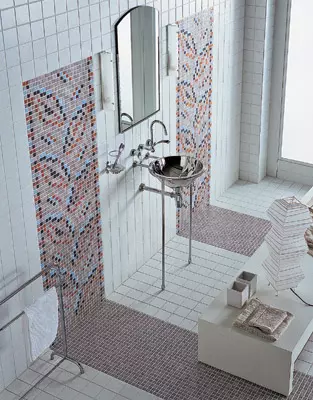
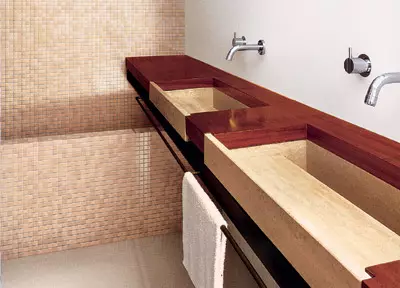
How to separate the walls and floors of the bathroom or lay out the pool, if the facing by the usual ceramic tiles seems to you too ordinary solution? There is a material applicable to all styles of interior design, from minimalism to baroque- and suitable for the fulfillment of a simple decor and to create a complex artistic canvase. This is a mosaic, one of the most ancient techniques of decorative and applied art. In the early time, it is increasingly used in the design of apartments and country houses. An industrial production technologies and laying of mosaic compositions came to replace the lost ancient secrets.
In the Russian market, a mosaic of materials such as glass, smalt, stone, porcelain, ceramics, and even metal is widely represented in the Russian market. All glass tessers (or, as they are also called, modules, chips) are about the same shape, color and price. They are released by Trend, Bisazza (Italy), Jasba (Germany), Opiocolor (France), Super Glass (China), Kolorines (Mexico), Wizanto and Ezarri (Spain). Earlier, in 1996, a glass mosaic and smalt from Bisazza appeared in our country. Bisazza- "heavyweight" in the production of mosaic products - prefers Venetian glass, slightly rough or smooth, transparent or matte. In addition, it offers a mosaic of smalt, from glass with gravestone gold or with the addition of Aventurine. Recently, in this group of materials, Bisazza had a serious competitor to Trend, which began expansion of his product to the Russian market two years ago. The rest are still lagging behind leaders in fame and product assortment. As an independent product, a ceramic mosaic is produced by Appiani and Giaretta (Italy). The Italian company SICIS uses smalt, stone, porcelain stoneware, metal. Megaron (Italy), Chengdu (China) and the Russian Factory "Bikonti" produce a mosaic from natural and agglomerated marble. In addition, Megaron makes tessra from smooth and translucent glass with the addition of smalt, and recently a firm, as well as Chengdu, has released a metal collection. Assue, "Bikonti" cuts the mosaic from ceramic and porcelain tiles. Two years ago, a mosaic from the ceramic granite of the Italian factory Casa Dolche Casa appeared on the Russian market. The product range includes the details that imitate natural stone, as well as the collection of artificially made tiles.
It is also worth paying attention to the French company Opiocolor (uses special opio glass), on the Spanish Zirkonio (glass mosaic) and Italian Marchetti Francesco, using a variety of materials, up to gravestone gold. Newbie in the market of Mosaic - Carter from China. It offers glass products similar to the one that produces Bisazza, but much cheaper - from $ 15 for 1m2.
Mosaic of glass
The most common material for the production of mosaic - Venetian glass. It has a solid structure, which means that it is not exposed to microorganisms and bacteria and can be used to finish the pools. Glass mosaic is a facing material that meets the requirements of many standards:
does not absorb water (UNIEN99) and not a porridge, therefore, it can be used in rooms with any humidity;
Resistant to sharp temperature differences in the range from -15 to + 145C (UNIEN104);
It is frost-resistant, withstands at least 100 cycles of transition from minus temperatures to the plus without loss of quality (UNIEN202). Note that this property is directly related to the absence in the material of pores and moisture in them. Therefore, a glass mosaic is more frost-resistant than a ceramic tile (except specialized), and is able to withstand more cycles of freezing-defrost, as well as temperatures up to -30c;
Does not be affected by chemical reagents and many inorganic and organic acids (UNIEN122), as a rule, in detergents. So boldly put a mosaic on the walls in the bathroom;
Does not change the color under the prolonged exposure of light with the ultraviolet component, which is why the mosaic canvas can be imperceptibly awarded new modules.
Associated with the fact that the mosaic is mainly used in wet rooms (bathrooms, shower), the friction coefficient is played by the latter role. The usual series belongs to the lowest class of friction coefficient R9 (DIN51130) working shoes by material. This means that a person can resist the plane, tilted at less than 10 to the horizontal, which is quite enough to keep barefoot on the floor on the floor in the bathroom (but not filled with water).
The most common form of set elements is square. There are three-dimensional squares: 1010, 2020 and 5050mm. Thickness ranges from 3 to 12mm. The smaller the chips, the details of the image will be more detail and more accurately drawing.
Due to the fact that the modules are cut by the machine, the mosaic surface is homogeneous. The composition of the glass is simple or complex. For example, Bisazza and Opiocolor are added to it an adventurine, giving a mosaic gold flicker. Interesting development of bisazza tessers with a median layer of gravity gold. In this case, the color of the products can be not only golden, but also blue, white, red. Megaron offers products from transparent glass with a colored substrate.
As for the color palette, it is difficult to describe it, it is so multicolored. Bisazza releases 67 coloring series Vetricolor, Trend- 65 (collection of Vitreo), Super Glass- 60, Opiocolor- 50 (L'Opio collection). Just a year the number of color variations in the series grows. The struggle is conducted for the most smooth transitions of halftone, since such modules are required for the production of art panels, stretch marks and motley mixtures. White-bluish-greenish shades used in the design of pools and bathrooms are especially popular. Combines based on these colors can cost 2 times cheaper than a monophonic mosaic. Trying to diversify the types of your products, the factory offer collections with various decorative effects. The easiest is the imitation of marble. White tile with colored streaks is in the assortment of Bisazza, Trend, Jasba, Opiocolor and Super Glass.
The last trend in the design of the Venetian mosaic is a pearl shine. The distinctive feature of the Gloss series (Bisazza) and Shining (Trend) is the thinnest overflows of the color on the smooth surface, similar to which it could only be seen on Murana Schail from the Iridium collection, released 2 years ago by SICIS. The effect does not disappear over time. The price of all GLOSS modules is about $ 145 (1m2). The first category of the cost of Shining- $ 127, the second is $ 180.
"Liquid Gold"
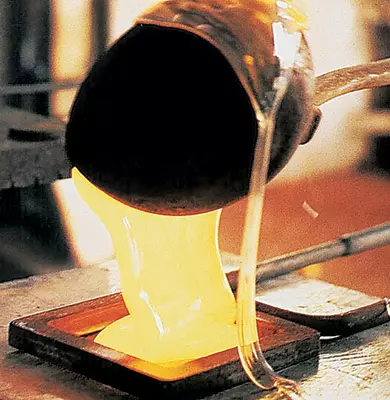
Smalt. Traditions of Byzantium
Venetian waters are the most magnificent material from which the mosaics of the Byzantine Empire were created. The real smalt is easy to find out on a saturated color, even light tones have no white inclusions. It is opaque, but it will be shone from the inside. Moreover, the production technology is such that the colors each time are different, so the smalt can also be distinguished by the ambulance of the canvas. Even a large surface, laid out by a smalt one, does not look sad. The material is very smooth and pleasant to the touch, any contamination is easily removed from it (lighter than with inexpensive glass mosaics). In addition to appearance, smalt and glass differ in technical specifications. Smalt is inherent resistance to abrasive wear, which makes it suitable for laying in places with increased abrasibility both inside a building and outside (corridor, kitchen, zone near the pool, porch). The material is equally good for walls and floor in the bathroom.The Bisazza factory produces the Opus Romano smalt (not to be confused with the smalto glass collection of the same manufacturer, only externally resembling a real smalt), and also makes small parties for the restorers. Smalts on ancient technology - in the form of pancakes with a thickness of 4-5 cm. Opus Romano is a small monochrome mosaic measuring 1212mm and a thickness of 6-6.5 mm with a slightly convex facial surface, matte or shiny. Wasil diversity and purity of colors (all of them 66) It is mainly used for artistic panels and decor. The thickness of the elements allows you to combine smalt with other materials: ceramic tiles, wood, porcelain stoneware, and also use it in the form of colorful inserts in the design of furniture.
SICIS Factory, the leader in the industrial production of mosaic from Murana Smalt, produces a color of 122 colors in three series: Murano Smalta (matte), iRidium (with a pearl effect) and Water Glass (transparent). They differ from Bisazza products and all other companies not only by tiles (15154mm), but also in texture, a kel. The main motto under which Sicis created its collections: "Not the accuracy of forms and color is important, the correctness of laying is important." That is, the chips have uneven faces, but the seams on the sheets where they are stacked, exactly coincide, and the deviation on some 0.5mm immediately affects the appearance of the coating. The factory does not produce very small modules, but ten-minute elements are used in the decor and artistic panels, brushed from larger.
Sicis mosaic is interesting because it does not have the facial and the wrong side, as well as the bench. Surfaces can be concave or convex. When the light falls on the mosaic cloth, the rays are reflected in different directions, and the impression of the guide, the uniqueness of the product is created. This feeling is enhanced by the fact that within the same color of the smalt can have different shades.
The price of smalts from Megaron and Bisazza is high enough (from $ 150 per 1m2). But the thickness of 4mm allows you to include such products (as decor) even in a simple glass mosaic. Imagine a few thin threads of Coral Sicis Smalt on the background of an inexpensive blue glass mosaic.
Ceramic line
Ceramic chips look similar to the usual tile, only smaller. The material is distinguished by low water absorption and high frost resistance.
The mosaic can be simply glazed (the glaze prevents the formation of a water stone on the tile and retains the color, protecting against the effects of water and aggressive substances) or with "special effects" - crackerels (small cracks), divorces, interspersed by other color IDR. Typically, ceramic chips have a square or rectangle shape, but there are exceptions. So, the products of the Italian factory GiaRetta imitate sea pebbles. Ceramic mosaic is suitable for lining a variety of reasons, including walls and floors in the bathrooms. Moreover, the surface in this case will be more embossed than the decorated glass mosaic. The only disadvantage of a unzipped ceramics is a porous structure, with all the troubles that arise from here.
However, there is a so-called monopulature of- ceramics, for many parameters, comparable with glass and smalt. It has a dense base and low water absorption (1-3%). It produces Giaaretta and Appiani factories. Products of these manufacturers with an absolutely smooth surface and rounded corners and edges, which cannot be missed. The rich color gamut of Appiani mosaic (more than 40 options) and a variety of sizes offered (2525, 5050, 100100, 2550 mm) make it possible to use it not only as a finishing material for the floor and walls, but also when creating a panel from standard modules for various types Decor. Of course, with the help of this ceramics, it will not be possible to embody highly artistic plans, but you can get very expensive, but worthy canvas. For example, Panel 11m in the form of a starfish costs about $ 250. The large thickness of the modules (6-7mm) allows you to combine them with conventional facing tiles on the walls and the semi-convex surface will be advantageous to look at a general background.
Gloss metal
Metal mosaic appeared on the market 3-4 years ago under the Metallismo brand brand from SICIS, and today its analogues can be seen from other manufacturers - Megaron, Chengdu. Metallismo modules are stamped metallic caps of 4mm height from a semi-flyrometer stainless steel sheet, fixed on a patented rubber substrate. In addition to some flexibility, the substrate gives the tile of the required degree of rigidity. As a rule, the AISI304 steel is used, and more corrosive stainless steel AISI316 has been applied to create a special High Tech series.
Modules can have a different form, texture and even surface color. Oval, hexagon, rectangular, rhombid and square elements allow you to lay out an intricate carpet on the wall or on the floor. Steel polished, make matte, apply notches of different species or, finally, are covered with a thin layer of brass or bronze (only in a wall version). In addition, the "brass" and "bronze" inserts can be recorded (oxidizing) to a green shade and give a mosaic view of the old web. Such elements are recommended to separate only walls, since electroplated coating is easy to cause mechanical damage.
The cost of Metallisma is quite high: 1m2 is about $ 350. But if you use the products as a decor or for the design of small surfaces, it will turn out option "inexpensively and worthy," and the interior will acquire a highlight. Metal mosaic from Megaron and Chengdu thickness 8-10mm outwardly similar to Metallisma. The Italian option has a rubber substrate, the Chinese is made on a ceramic base. Matte and galvanized brass and titanium coating series are offered. The average price is 1M2- from $ 250.
Gold and platinum
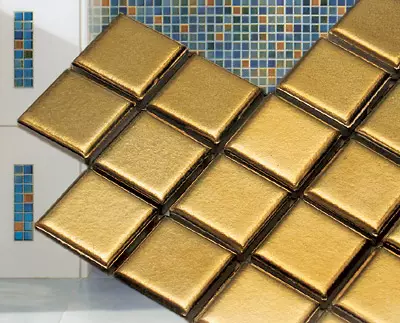
Introduction from a glass mosaic, the ceramic cannot be applied to the gold under the glaze layer. IP producers simply spare it on top of two layers. GiaRetta began to do it recently, following the Appiani. Such tiles can only be mounted on the walls. The cost of 1m2 gold gloss in mosaic version is $ 2500 and higher.
Select drawing
Most firms make mosaic compositions on their own sketches (in catalogs there are usually hundreds). The drawings proposed by the Customer can also be used.Bisazza-decorates from one-or two-color mosaic (mix), as well as the effect of a smooth transition from a light tone to the dark (spumato). The manufacturer offers simple drawings (fish, wind rose, flowers, geometric patterns), and more complex (mainly on the topic of antiquity and signs of the zodiac) - with shadows and subtle shades of transformations. Special place in the assortment occupy colored mixtures for pools. The firm makes the mosaic of both the average price category and exclusive, very expensive compositions. All this products are characterized by good quality and ease of operation.
More demanding people who wish to decorate their house with something completely unique, you can recommend the products of MEGARON and SICIS. The latter offers customers simple geometric sets of stones. Figure mosaic is created not only by color, but also the texture, size and method of laying pebbles. In addition to ornaments and patterns, there are scene compositions, mainly with antique motifs. Impressive collection of mosaic carpets. They are made so masterfully that the full illusion of the present carpet occurs. The basis of the design of Mozaic from Megaron is an antique ornament and stories - meanders, waves, palmetes, tritons, fursions, masquerties IT.D. When creating patterns, both colors of stones and a variety of (mostly antique) methods for their laying are important. The result of the composition is almost indistinguishable from genuine antiquity samples.
The mosaic collections of Appiani and Giaretta firms include ceramics of original forms and colors. Combining modules with glass or even with conventional ceramic tiles, you can get truly amazing coatings.
To create compositions according to the sketch of the Customer, many firms resort to helping the computer. At the same time, SICIS, specializing in smalt and natural stone, processes tessra on smooth curve lines. The small format of chips, precisely customized to each other, and their wide color schemes allow in all details to reproduce the most complex pattern with a smooth flower transition. Similar paintings are surprisingly picturesque, but, of course, silence. The "Mosaic Studio", which is part of the Convent Center, applies as a matrix assembly (when the minimum size of the color spots is equal to the size of the chip) and the technique of glass pads. The curve of the panel (for which, by the way, the Bisazza glass mosaic is used) is acquired a clearer ornamental character and should be cheaper in the manufacture.
Set of mosaic
Modern mosaic is gaining in the same place where it is produced. For accurate drawings, chips are cleaned manually. Vggazines and salons The finished products come in the form of so-called matrices. They are pieces of paper or grid, which in a strictly defined order chips are pasted. The matrices are more often made by square (3030cm), relatively rectangular, with sizes, multiple 30cm. Sometimes there are matrices of other forms.
On the place of the laying you only need to connect individual fragments and attach them to the base with the help of a special (not tiled!) Glue. At the same time, it is important to keep in mind that the paper is pasted on the front side of the chips, and the grid is on the rear. After mounting, the grid remains under the chips forever, and the paper is wetted and then removed. For laying mosaic, a specialist will be required from 2 days to 2 weeks (depending on the size and other surface features).
Each company offers optimal adhesives and grouts for its products. It is wiser to take advantage of these recommendations - then it will be easier to demand from builders to fulfill warranty obligations.
In addition to the competent selection of materials, they must be skillfully apply. First of all, it should be realized that the skills of the Masters Tiler for laying mosaics are unsuitable. It is very capricious and does not forgive even small mistakes. The preparation of a solid base with a smooth, smooth surface is extremely important. Cement-sand plasters can be used only with adhesion and reinforcing additives, such as COLLASEAL or FIBERFLEX (INDEX, ITALY). Then the layer coming down during alignment to no (up to 0.5 mm) will not be cleaned, and later cracks will appear in the plaster. The base must be carefully placed, given the position of the set elements on curvilinear surfaces and in places of adjoins. Clearly reduce the number of rolled (cut) chips. Of course, you need to ensure that the matrices are pasted on the base with the desired side. In this case, modules on paper are more suitable for convex surfaces, and for concave on the grid. The glue is required to ensure adhesion at least 3 MPa and has a viability of at least 30 minutes for laying simple panels and more than 60 minutes for complex. It should be shuffled in an amount sufficient for one hour of the wizard. It is better to smear the platform with a size of up to 1m2 (on 9 mosaic matrices), if the drawing is simple and the surface is flat. The glue is usually applied under 2-4 matrices.
Finally, if the mosaic is applied in a wet room, do not forget about reliable waterproofing the foundation (for bathrooms there are a number of system materials from Index, Schmburg, Vandex IDR.). Otherwise, after 3-5 years, the mosaic will begin to fall off with pieces of base.
Price characteristics
Although sellers argue that ceramic mosaic is the cheapest, in fact it turns out that the price is 1M2 glass monochrome mosaic - from $ 49, and ceramic - from $ 79. Ceramics in the form of pebbles cost from $ 120. The use of more complex glass significantly increases the cost of products. Mosaic with adventurine will cost in the amount of $ 101 per 1M2 (OPIOCOLOR), and each golden tile - from $ 1.3. Smalt, too, the pleasure is not cheap: the minimum price is 1M2- about $ 170. The aged stone is more expensive (from $ 112) than the usual (from $ 108). Artistic mosaic is estimated almost as a work of art. On the mid-sized panel (11m) will have to spend at least $ 800-1000. The price of exclusive and author's panels is also the corresponding - Outdoor SICIS carpet can cost $ 10,000 and more.
Thus, almost everyone will be able to find a mosaic for themselves and for themselves and blooming the interior.
The editorial board thanks the company "Shik", "Bars", "Giel", "Bikonti", "Olem", "StroyKomplekt", "Convent-Center", "Fintorg", "Mozaica", IBTM, representative office of Bisazza for help in preparing material.
